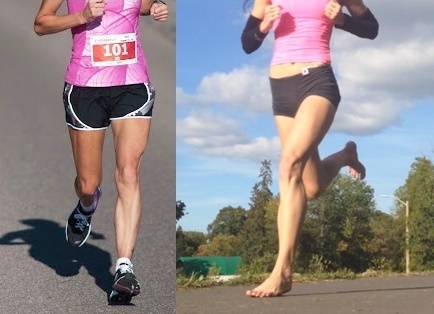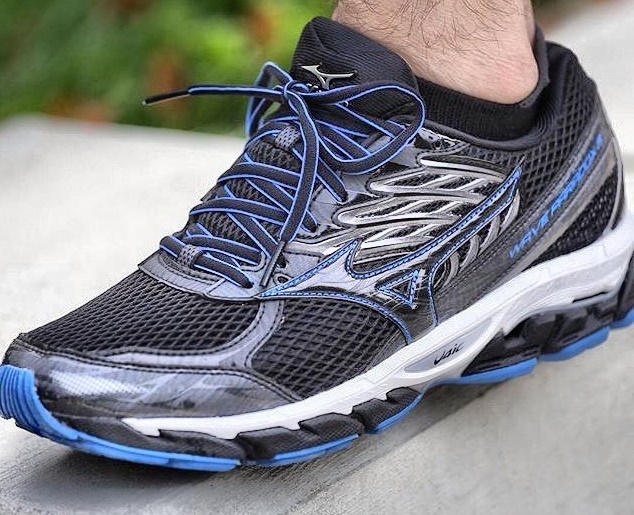Several studies (references below article) have shown heel strike runners have higher levels of injuries because all-around impact levels are often much more in heel strike running than forefoot running.


A landmark study published in the Journal of the American College Sports and Medicine compared injury severity in competitive cross-country college runners who were either forefoot strikers, or heel strikers.
The study found that the heel strikers were 2.6 times more likely to have mild injuries, 2.4 times more likely to have moderate injuries, and had an overall injury rate that was nearly 2 times higher than the forefoot strikers.
It gets even worse…
The study also compared the nature of injury in the heel strikers and forefoot strikers and found:
- Injuries such as hip pain, knee pain, lower back pain, tibial stress injuries, plantar fasciitis, and stress fractures of the lower limb were 2 to 4 times more frequent in the heel strikers than the forefoot strikers.
Initially, and for some strange reason, the researchers predicted the forefoot strikers to have a higher incidence of Achilles injury and metatarsal stress fractures than the heel strikers. However, the results showed no difference between the two foot strikes.
What Makes Forefoot Striking Safer than Heel Striking?
Mechanically, forefoot striking and heel striking are polar opposites which account for the different varieties of forces in heel strike running, but not in forefoot strike running. More specifically, heel striking produces a unique burst in a high impact at landing, and is a significant contribute to nearly all running injuries. This burst in high impact is referred to as the peak impact transient force (a force not produced in a forefoot strike).
All runners, heel strikers and forefoot strikers, produce impact at initial ground-contact, but not all forms of impact cause injuries, its when impact exceeds tolerance that leads to injury. However, the peak impact transient force in heel strike running occurs beyond impact threshold at a magnitude 2 to 3 times higher than a forefoot strike landing.
Whats worse, the conventional wisdom was thick cushioned running shoes reduce these impacts, however we are quickly learning that the thicker the under-heel cushioning, the greater the peak impact transient force! This is because a thicker-cushioned heel causes the heel to actually plow harder down onto the ground in an effort to push through all the cushioning’s compressible materials.

Heel strike running in any shoe, but especially thickly cushioned shoes, were found to produce greater peak levels in excess, while intensifying movement patterns at the heel during stance, leading to over-pronation, which means the back of the foot pushes outside a greater distance from its natural ranges. Read more on that here!
The Take Home Message
When it comes to running with less impact, and therefore, less chance of injury, its well-source that sustainable protection from impact starts not with increased underfoot cushioning, but with adopting a forefoot strike, since its protective value derives from naturally improving knee-joint mechanics, shin angles as well as upper body posture, all of which were found to account for more effective impact protection than heel strike running in thick cushy shoes.
Still need more convincing? Here are all the injuries caused by heel strike running that forefoot running is well on record for perfectly preventing!
If you’ve enjoyed this post, you’ll LOVE my YouTube channel, here, where I show why and how forefoot running really works!
References:
Daoud at el. (2012). Foot strike and injury rates in endurance runners: a retrospective study.

Bretta Riches
BSc Neurobiology; MSc Biomechanics candidate, ultra minimalist runner & founder of RunForefoot. I was a heel striker, always injured. I was inspired by the great Tirunesh Dibaba to try forefoot running. Now, I'm injury free. This is why I launched Run Forefoot, to advocate the health & performance benefits of forefoot running and to raise awareness on the dangers of heel striking, because the world needs to know.
Latest posts by Bretta Riches (see all)
- Does Foot Strike Really Matter in Running? YES! - 17/04/2024
- Heel Lifts Increase Injury in Runners - 16/04/2024
- Are Minimalist Shoes Good for Seniors? YES! - 14/04/2024
